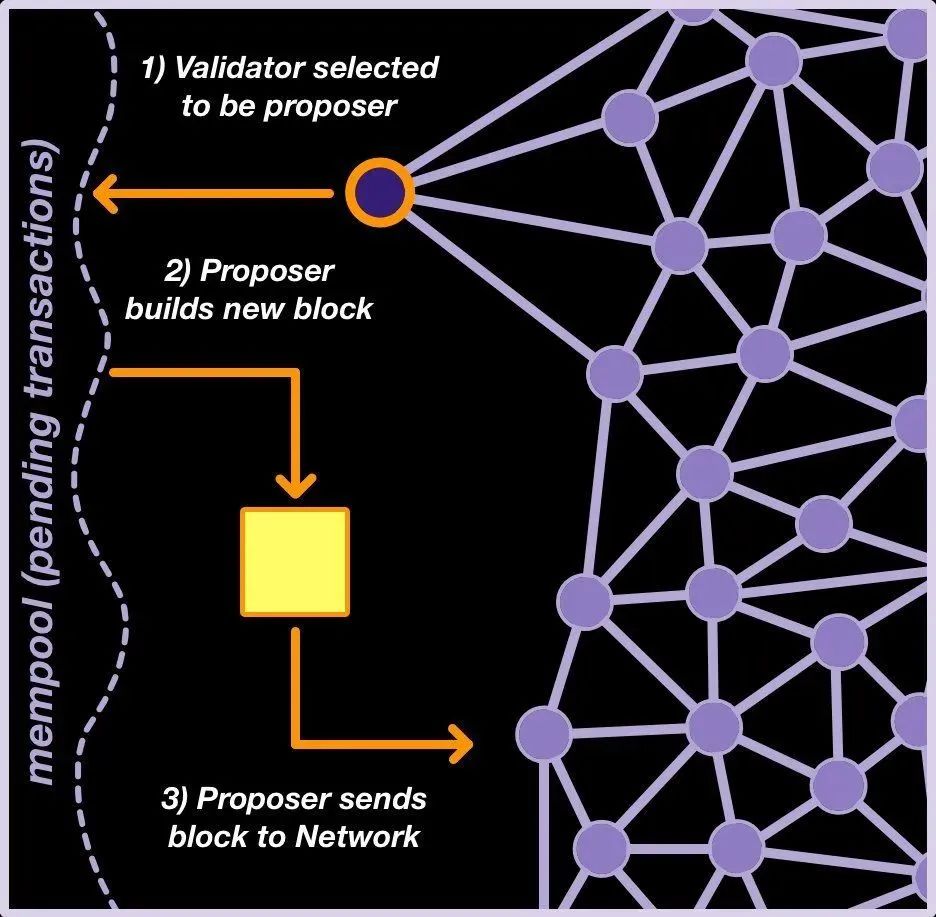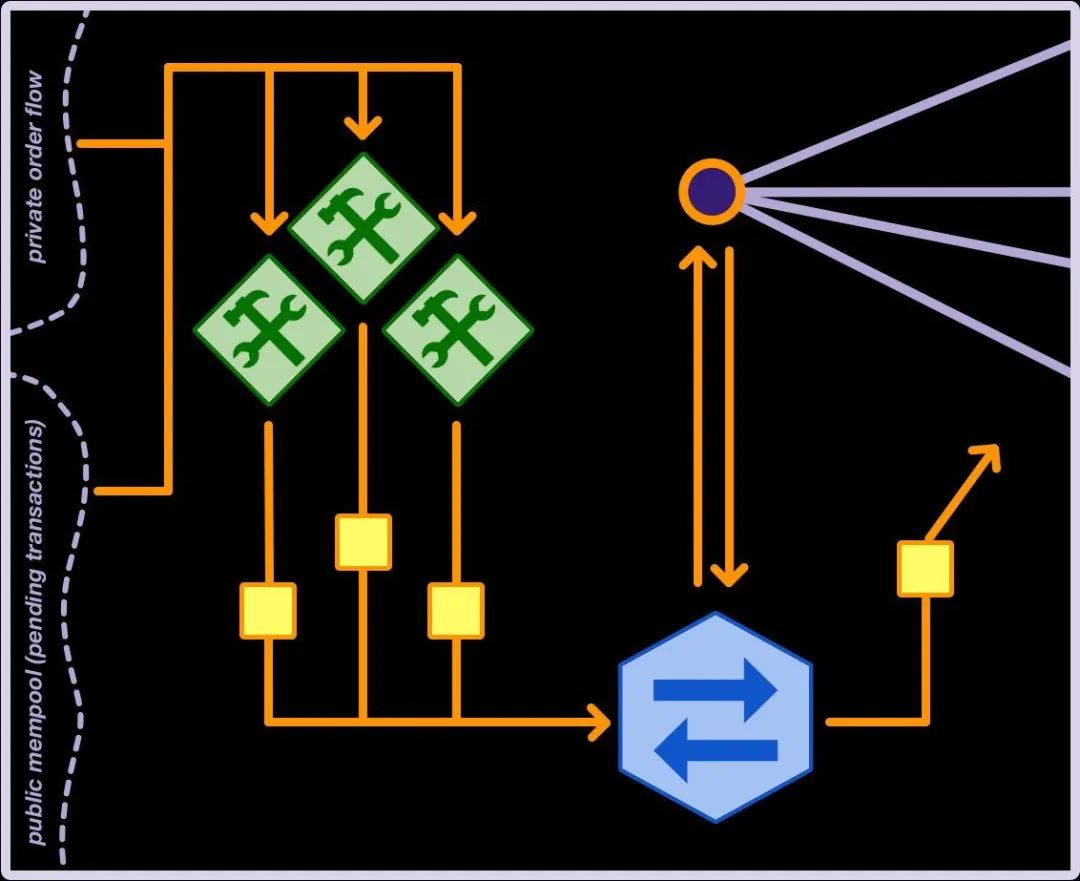Original source:@SalomonCrypto
Original source:
Original Author: HaymTwo foundations of Ethereum:
Block proposals and MEV-Boost

The Two Foundations of Ethereum: The Importance and Solutions of Block Proposal and MEV-Boost
Ethereum is a distributed computing platform, a network composed of thousands of computers (nodes). It coordinates using a PoS consensus mechanism to maintain synchronization of the Ethereum Virtual Machine (EVM). EVM is a shared computing platform, while blockchain is its history, and ETH is its source of life.
PoS is a big topic, what you need to know is:
A block is a bundle of transactions executed in the EVM
Users will send pending transactions to the transaction pool
In each slot, the network will randomly select a validator to become the block proposer
read more

The Two Foundations of Ethereum: The Importance and Solutions of Block Proposal and MEV-Boost
MEV stands for Maximum Extractable Value, which represents the general principle that monetary value can be extracted from having special information, access rights, or privileges in a system. (Translator's Note: MEV, also known as miner extractable value, has been widely used after the merger to refer to validators packaging transactions or sorting exchanges to receive a lot of value.) On Ethereum, block builders control the vast majority The MEV.
As a simple example, suppose Alice wants to sell 100,000 ETH and Bob wants to buy 1 ETH. Alice's order is so huge that it can even affect the price of ETH. If the builder puts Bob's order before Alice's than after Alice's, then Bob will buy a smaller amount of ETH.
Sophisticated block builders can profitably do a number of things with ordering:
Get a higher tip from Bob to execute his transaction first
Create and process a transaction to sell own ETH before processing Alice's transaction
Create and process a transaction to buy back more ETH later when the ETH price is lower
It is profitable and highly incentivized for validators to be good at building blocks. The more they can understand how transaction pools work (and the better at accessing private order flow), the more value they can earn from their stake. But therein lies the problem: if left unchecked, MEV will centralize Ethereum.
The problem is that the effects get worse over time. This is also the essence of compound interest - the eighth wonder of the world. (Translator's Note: According to reports, Einstein once said: "Compound interest is the eighth wonder of the world. Those who understand it can benefit from it, and those who don't understand it will pay the price.") If left unchecked, the most capable Block builders will capture more and more ETH, and eventually even Ethereum.https://twitter.com/SalomonCrypto/status/1592309373732151296 In order to further explore the importance of decentralization, readers can first read the second article of the tweet:
, and now let's take a brief look at it together.

The Two Foundations of Ethereum: The Importance and Solutions of Block Proposal and MEV-Boost
Luckily, back in 2020 @thegostep and Flashbots anticipated this kind of problem and set out to build on it. Even before the merged upgrade was complete and Ethereum switched to PoS, they already had a temporary solution running (and a full solution ready).
Note: Briefly explain how the Ethereum node works. A node is a computer that runs two software, the execution layer client (manages EVM) and the consensus layer client (manages PoS).

The Two Foundations of Ethereum: The Importance and Solutions of Block Proposal and MEV-Boost
Thinking about the above example, assuming the block builder knows that Alice is going to affect the market, he can calculate the difference between selling and buying back ETH before and after the transaction, so that he can lock up an additional 50 ETH. In order to be packaged first, the builder may be willing to bid up to 49 ETH, because he can still lock in a profit.
The purpose of the MEV-Boost system is to separate the difficulty of building blocks, knowledge/capital/experience from the economic rewards of proposing blocks. When a proposer is selected to propose a block in a slot, he can share the rewards provided by MEV simply by selecting the block with the highest bid.
MEV-Boost is a fantastic product, it's a big step towards decentralizing Ethereum, but it's not perfect. In order for the reader to understand why, we need to delve a little deeper into how MEV-Boost works (but not too deeply).
First, we must recognize three characters:
Builders, responsible for making the most profitable blocks possible for each Slot
Relay, responsible for acting as an intermediary

The Two Foundations of Ethereum: The Importance and Solutions of Block Proposal and MEV-Boost
The problem with MEV-Boost is its relay, not only the builder needs to trust the relay, but also the proposer. Builders must trust the relay to keep their blocks invisible until the proposer pays the builder's fee. The proposer must trust that the relay has confirmed the validity of the block and bid without being allowed to see the underlying transaction. This is very important because invalid blocks will result in the proposer being slashed.
Fortunately, we have solutions, two of which are explored below. But before I do that, I want to take a moment for readers to realize that while MEV-Boost is not perfect, it is a giant leap forward. With MEV-Boost, node runners using plug-and-play devices (like myself using @Rocket_Pool) are already experiencing MEV benefits.
The first solution is to write the concept of MEV-Boost into the Ethereum core protocol. This would eliminate the need for relays in the network and allow us to verify everything cryptographically without leaking block information early on. We call this idea the Enshrined Proposer-Builder Separation written into the protocol.The second approach is to transform the trusted components of MEV-Boost into a trustless system powered by Ethereum, using new ideas about Ethereum features proposed by @sreeramkannan. You can also refer here。
read link
Both solutions require some modifications to the MEV-Boost schema. On top of that, MEV-Boost may enable block builders to censor blocks (for whatever reason). Fortunately, there are plenty of other great ideas that can serve as solutions.